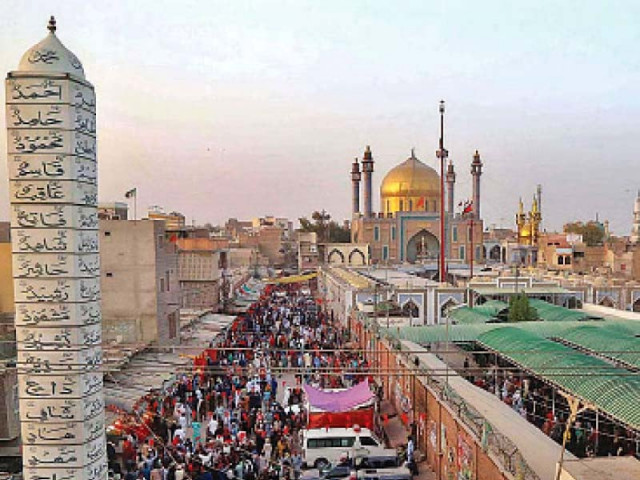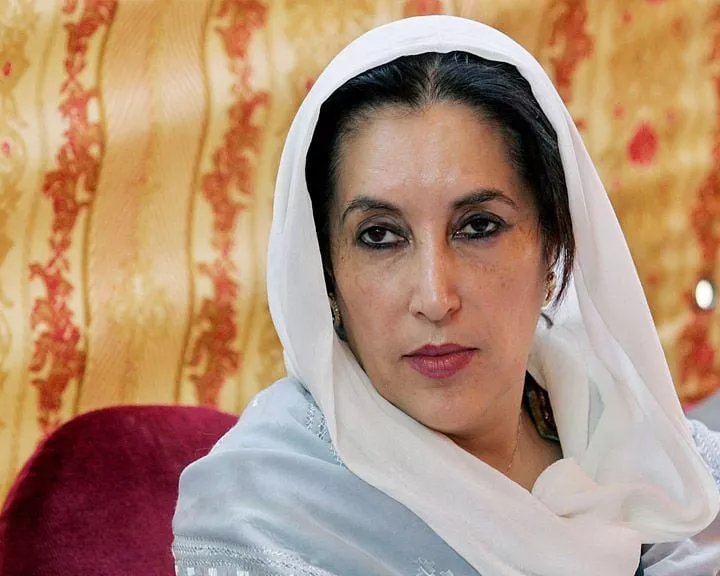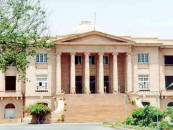Thousands converge on Sehwan
Lal Qalandar’s annual Urs concludes with Sufi music, literary conference

The three-day festivities of 770th urs of Hazrat Lal Shahbaz Qalandar (RA) concluded on Thursday in Sehwan, town of Jamshoro district which brimmed with hundreds of thousands of devotees.
Besides paying visits to the shrine, which is a spiritual experience, the devotees were entertained by a host of government organized activities including sports, agriculture and trade festivals, musical nights and conferences.
The provincial mines and minerals Shabbir Bijarani and chief minister's adviser Fayaz Butt performed the official closing ceremony while Director General Rangers Sindh Maj Gen Muhammad Iftikhar also laid chaddar over the grave of the sufi saint.
Talking briefly to the media the DG said around 4,500 policemen and personnel of Rangers were deployed for security of the shrine and the town. He said the security situation in the country is satisfactory.
Some 200 CCTV cameras were installed in the town and around the shrine's premises in addition to monitoring through the drone cameras. Special health arrangements were also put in place to deal with any contingency. The town was kept closed for entrance of vehicles for which parking lots were set up on the outskirts. The people were made to either walk their way to the town or to take a three-wheeler risckshaw.
Literary conference
The writers, historians and poets have reiterated the need of carrying out scientific research over Qalandar as well as Sehwan town. "A thorough empirical research about the history of Sehwan town is still missing," observed Anwar Figar Hakro, writer, while addressing Shahbaz Conference in Sehwan.
He, however, underlined that the history of Sehwan dated back hundreds or perhaps thousands of years according to the existing research. "Like its geographical history, Sehwan's spiritual history is also rich."
The scholar asked the Sindh culture, tourism and archives department to spearhead the research with the help of a team of historians and scholars. "Sindh was not only the center of sufism, but we can claim that the preaching of oneness of the Almighty creator also spread from Sindh," he contended.
Hakro also underscored the need of researching about the pre-Islamic spiritual figures of Sindh. The writer Taj Joyo said Molana Jaluddin Rumi was among the contemporaries of Qalandar. He rejected the contention that Qalandar spent a very short span of his life in Sindh, pointing out that such a vast following of the sufi saint across Pakistan and India proved that he spent a long time in the province.
Karachi University's Prof Sher Muhammad Mirani said Qalandar reached Sindh when he was in his old age after travelling to Saudi Arabia and other lands. "Qalandar's dhamal [dance] is the name of a spiritual state," Dr Ramzan Bamri said.
Dr Sakina Samo said Sehwan used to be the capital of many dynasties. "Qalandar's arrival on this land was a huge blessing." Writer Khair Muhammad Buriro said saint was also a religious scholar and a pious man.
Sindh University's Prof Dr Makhmoor Bukhari said there is an undeniable historic reference which proved that Qalandar hailed from Marvand area of Azerbaijan. He suggested that Qalandar's researchers should make Marvand a necessary part of their research.
Sughar kachehri
Sughars, the raconteurs who narrate folk tales in addition to making poetic renditions, have said organizing sughar kachehris [conferences] is one the best ways of preserving culture and history. They said before the formal writing of history began, sughars kept the history alive through their folk tales.
"Sughars are a reflection of the society and of the times in which they live,"Ali Akbar Chandio said. Yaqoob Jagirani observed that the sufi saints like Qalandar Lal Shahbaz, Shah Abdul Latif Bhitai and Sachal Sarmast preserved Sindh's culture and history in their poetry. "They used to narrate stories of heroism and through that way they guided the people to live in peace and brotherhood."
Published in The Express Tribune, March 25th, 2022.



















COMMENTS
Comments are moderated and generally will be posted if they are on-topic and not abusive.
For more information, please see our Comments FAQ